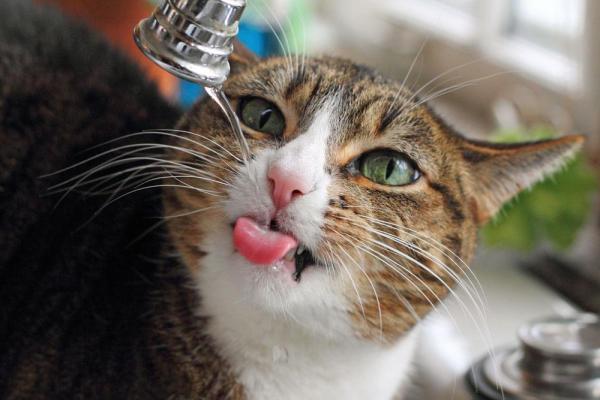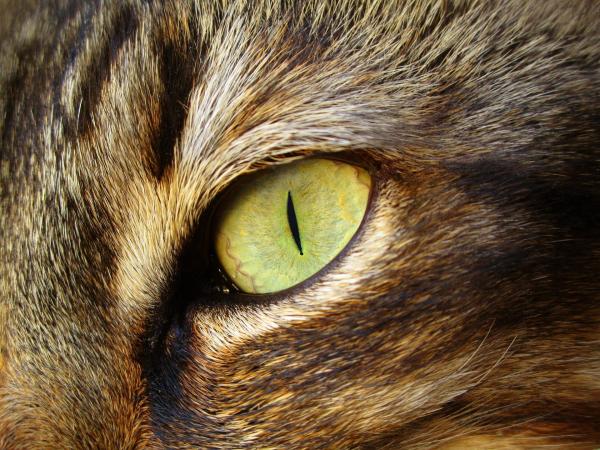
Dehydration occurs due to a water and electrolytes imbalance in the body of the cat and this can cause serious complications and even death if left untreated. When the fluid level is lower than normal, the cat begins to dehydrate.
There are some signs that will help you to know if your cat has lack of liquids and that can save you lot of trouble. If you ever wondered How to tell if a cat is dehydrated, don't miss the guidelines AnimalWised offers you below. If you notice any of the symptoms of dehydration you will need to provide your pet with fresh water and take them to the vet.
What causes dehydration?
It is sometimes difficult to recognize dehydration in a cat, since the symptoms can be subtle and may be left to ignore. This is why it is important to know what can make your cat suffer dehydration, to be more vigilant and take measures in time.
There are some diseases that cause this condition such as diarrhea, vomiting, fever, internal bleeding, urine problems, sunburn or heatstroke, among others.
If our cat suffers any of these problems we will have to closely monitor the symptoms of dehydration and call the vet if required, besides ensuring we provide enough fresh water to drink.

Check their gums
Moisture and capillary filling time are two methods to determine if a cat is dehydrated. To check their gum's hydration you should gently touch it with your finger. Raise the upper lip and do it quickly, because it can simply become dry due to the air if you take too long.
If the gums are viscous or juicy this may be a sign that your cat is in the first stage of dehydration. If they are completely dry, it may mean that your cat has a severe dehydration.
A capillary filling test consists in measuring the time in which the capillaries of the gums take to fill with blood again. To do this, press the gum so it becomes white and count how long it takes for them to regain their normal color. In a hydrated cat this takes about two seconds. The longer the gums take to become pink, the more dehydrated your cat will be. This is because dehydration reduces the amount of blood, which is why it will take the body longer to fill the capillaries.

Check the elasticity of your cat's skin
The skin of the cat will lose elasticity and will be dry if it is not well hydrated, so if you are wondering how to tell if a cat is dehydrated, you can check How long it takes for the skin to return to its place after stretching it.
To do this, gently pinch the skin on the back of your cat and pull it slightly upward, and away from the body. In a cat that is well hydrated their skin will return to their normal state, while if they are dehydrated it will return to its normal state very slowly.
This test only applies to cats with a normal weight without skin problems and that are not very old, since with age, the skin loses elasticity.

Check out their eyes
The eyes can give you much information to know if a cat is dehydrated. The lack of fluids causes their eyes to look more sunken than usual, in addition, they will be very dry and, in cases of severe dehydration, their third eyelid may be visible.

Check their body temperature and heart rate
When a cat is dehydrated their heart will pump more quickly, so the heart rate will be higher. In addition, this affects their body temperature, which may be lower than normal.
You can hold your cat's leg and feel their temperature. If they have the same temperature as usual you should not worry, but if you notice that they are colder than normal they may be dehydrated.

This article is purely informative. AnimalWised does not have the authority to prescribe any veterinary treatment or create a diagnosis. We invite you to take your pet to the veterinarian if they are suffering from any condition or pain.
If you want to read similar articles to How to Tell if a Cat is Dehydrated, we recommend you visit our Other health problems category.
- It is highly important to take your cat to the vet if you notice on or more of the signs mentioned in this article.